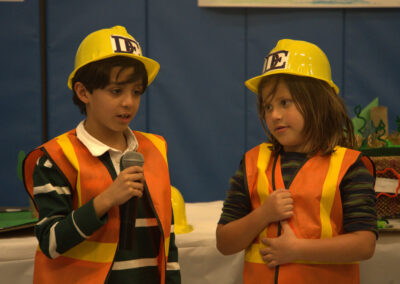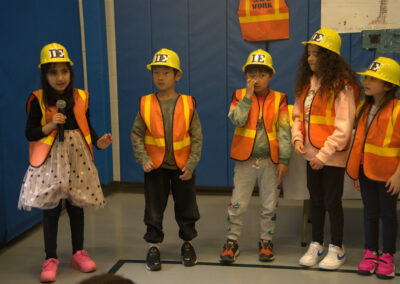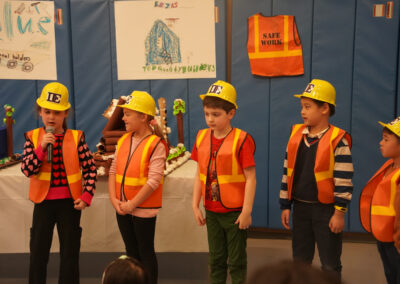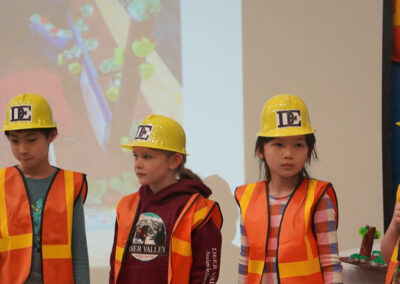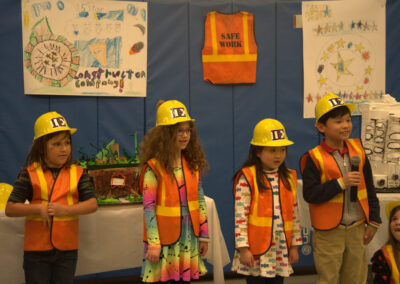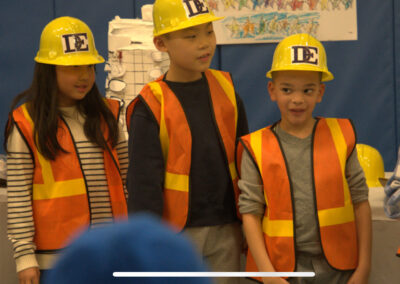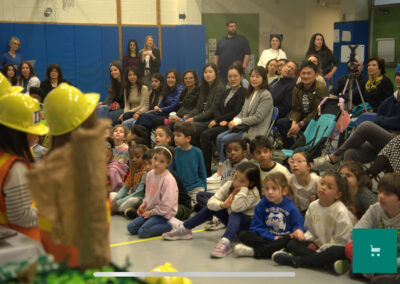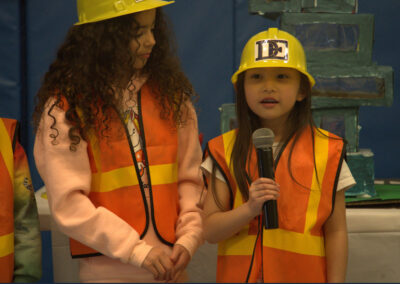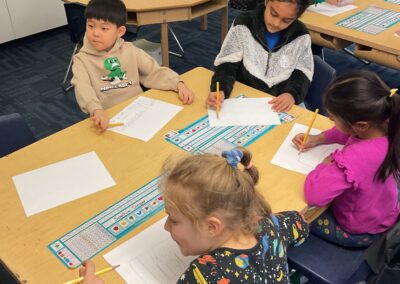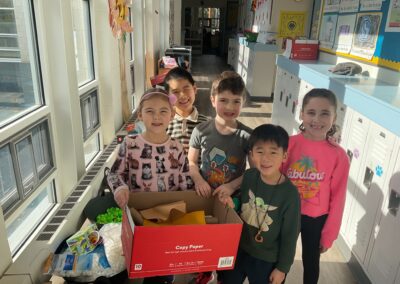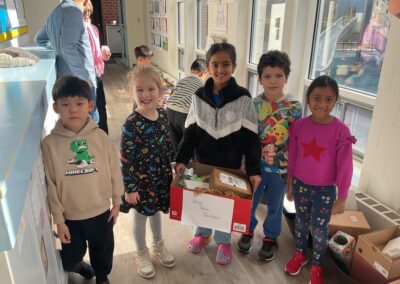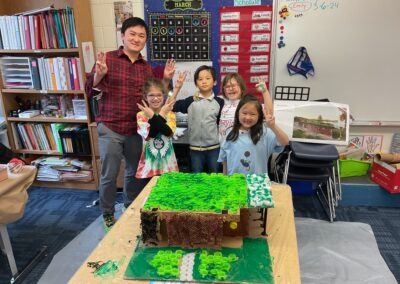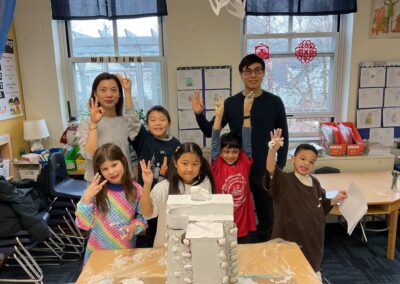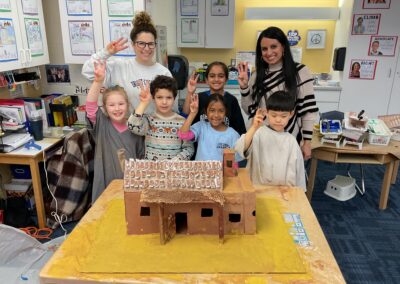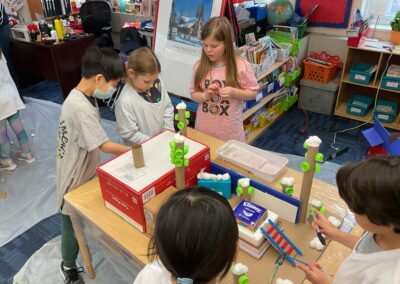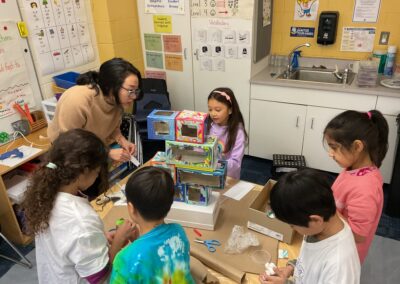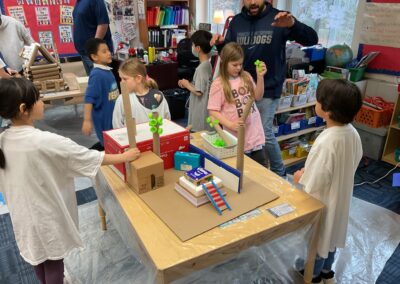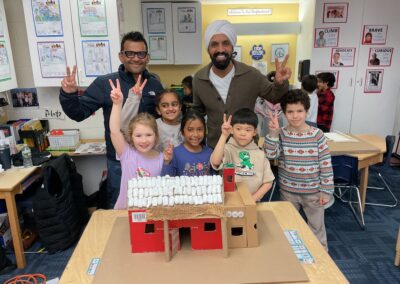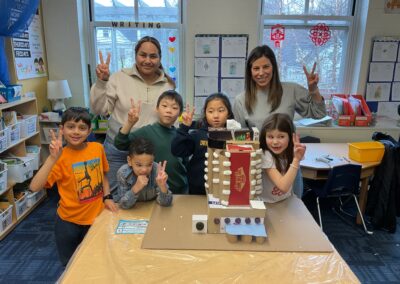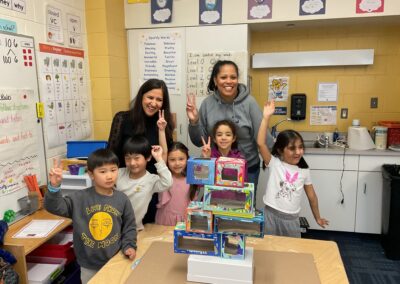
In March, the first graders celebrated the culmination of months of hard work with the Houses and Homes assembly. To an audience of their families and the kindergarten and second-grade classes, they showcased the models they built of homes from around the world. This gave the kindergarteners a glimpse into first-grade work and the second-graders a fun moment to reminisce about what they built last year. This assembly is an exciting end to the Houses & Homes Social Studies unit that introduces the study of human shelter on the six habitable continents.
To begin the unit, first graders study shelter and how things like climate, landscape, and natural resources affect homes around the world. They then studied how houses are built and learned about the important jobs and trades in construction. After all this, they team up in construction companies and select a continent where they want to build a home. Before they could start building they needed to research and plan! They studied their continent’s natural materials and read books about different types of shelters. After a detailed guided study about the climate, housing, and resources in Africa, Antarctica, Asia, Australia, Europe, and North and South America, the first-graders were ready to make a plan and construct their own models of homes out of recycled materials. Working together towards a common goal has been the focus of many of the discussions with the first-grade students.
To prepare them to be members of a home-building construction team, everyone talked about the “4 Cs,” Collaboration, Cooperation, Compromise, and Communication. They practiced using language that encouraged the children to find common ground. Their teachers used skits to model the mannerisms, tone, and language people use to come to an agreement. As the building process progressed the 4Cs were essential! Another important part of the building process were the parent volunteers who helped with tools like hot-glue and box cutters while the children led the construction. Throughout the building process, we heard the children using language that helped them work together, “Let’s use both your idea and my idea!” or “Let’s try your plan and see, and then we’ll try mine,” and we noticed some groups held votes to settle disagreements. Their collaborations were evident in the colorful and fact-packed final projects which included distinctive features such as a living roof and balconies for enjoying warm weather. The first graders found plenty of opportunities to practice the 4 C’s during a very lively and productive building week.

